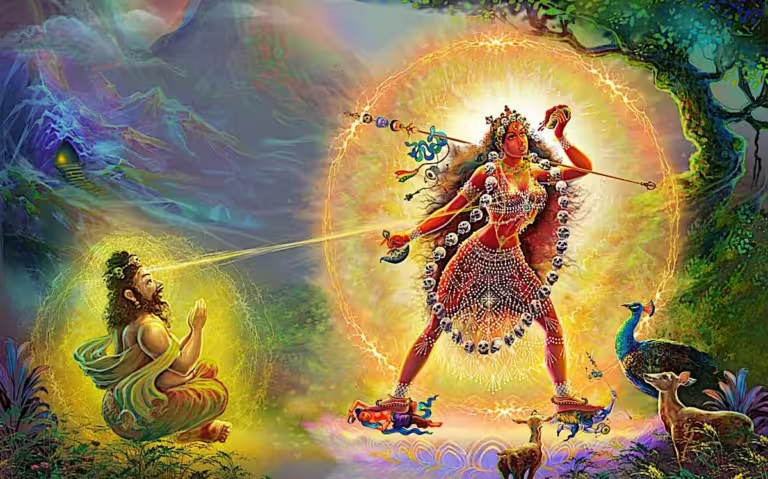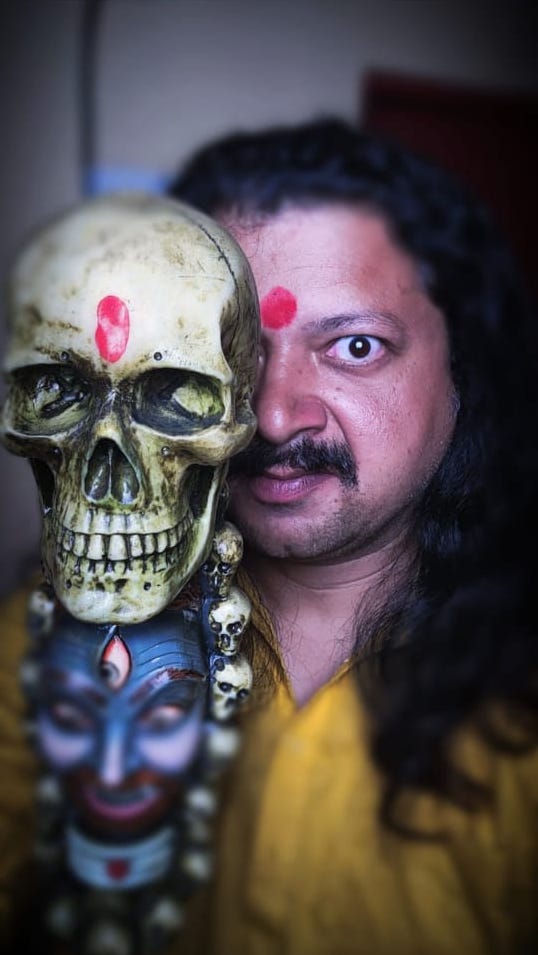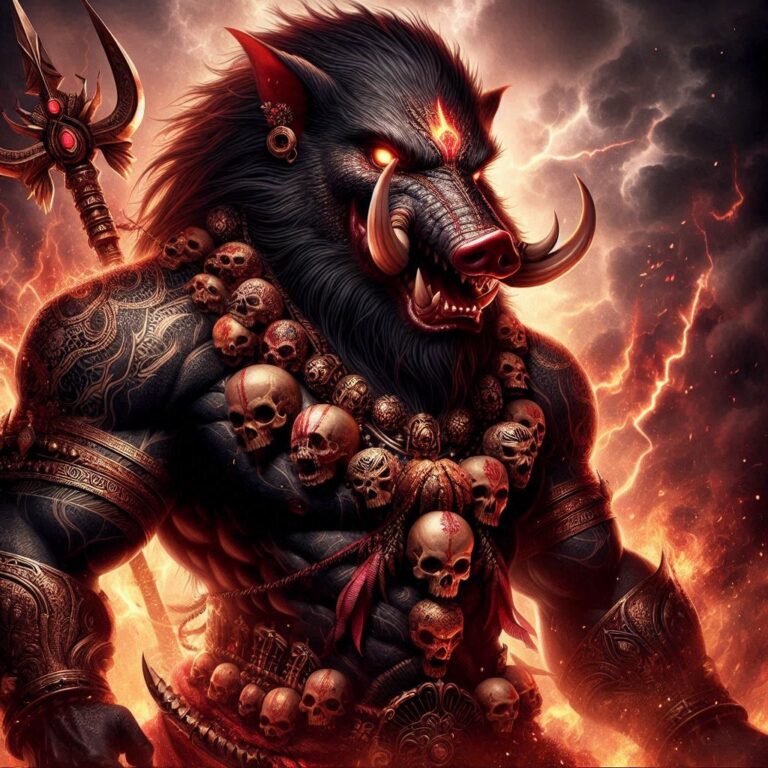DHUMAWATI Mata is an unusual deity in that she lacks physical beauty, perhaps because we associate misery with ugliness. Looking into her eyes, we can tell that she is an unaltered version of the natural world. She can demonstrate to us that although our outward attractiveness fades, our inner divinity does not.
Dhumavati’s name, which means “she who upholds in smoke,” is a metaphor for her ability to vanquish evil by filling the air with toxic fumes. Following the destruction of the Multiverse, the Mahavidya is the resulting smoky atmosphere. Dhumavati Devi is revered as a goddess of wealth and spiritual poverty relief. Smoky Shakti, that’s who she is. She is also known as the Shakti without Shiva and the infinite solitary mother. The Goddess is a symbol of “despised ambitions.” Her status as a widow is interesting in and of itself. By consuming Shiva, she achieves unity as a form of individuality and possibly liberation.
Artwork Depicting Dhumavati Mata
Dhumavati Mata has a hazy skin texture, deep wrinkles, and is clearly sad. Her face structure resembles that of a crow in the areas of the nose, eyes, and throat. She’s armed with a club, torch, fan, and broom. She has a severe frown and is very stern. She is in a Horseless Chariot while disguised as a beggar. Yes, her breasts were dry; her hair was unruly and grey; her teeth are crooked and she’s losing them; and her clothes were old and threadbare. Smoke, a metaphor for destruction, draws her in. She has a penchant for wacky choices and tightly controlled smoking, as well as white blossoms and garments, alcoholic beverages, wines, Bhang, cigarettes, and chillum, and especially spicy foods. She’s given a gift that doesn’t involve smoke.
The Roots of Mahavidya
Dhumavati Mata is infamous for being a widow, an ugly person, and a fierce warrior. Devi is characterised by her association with destitution and need, thirst and hunger, dumb luck, and a violent disposition. Maa Dhumavati’s history can be told in two different ways. As a result of her father’s sacrifice, she burns herself to death during Sati’s death march, which she then emerges from in that one. With a charred and smoky visage, she enters the world filled with the fury and despair of the disregarded goddess Sati and the ephemeral, practically undetectable quality of smoke. Smoke breaks down, drifts, and has no fixed location, casting a pall over interactions between people.
In the second story, Shiva, ever the ascetic, refuses to feed the protagonist one day. Otherwise, I’ll have to devour you,” Sati replied, swallowing Shiva. More importantly, he survives. Instead, he talks her into giving up on him. He then utters a curse, saying that she will be a widow as soon as he is freed. In one universe, Shiva and Sati remain married. In this alternative reality, Sati plays the role of the rejected deity, the unfeminine punishing her for her current aggressive frustration by casting her as a demonic figure who must dwell beyond the realm of masculine protection and, by extension, beyond the norms of normal culture. Shakti is powerless without Shiva, the male figure of authority.
However, nothing is known about the seven Mahavidya, in contrast to other Mahavidya celestial entities like Kali and Laksmi. She has characteristics with the deities Nirrti, Jyestha, and Alaksmi, all of whom are associated with feelings of betrayal, shame, and profound melancholy, and are often considered to be one and the same. Jyestha is the most physically resembling of the three goddesses, with her ample bust and crow-depicted banner. Jyestha is a perfect embodiment of the name’s meaning of “older person,” as she herself is an elderly woman. Like her, the goddess Alakhsmi carries a crow banner and is associated with similar conditions (difficulty, thirst, and hunger). Nirrti, like Maa Dhumavati, personifies annihilation and destitution.
This is the #Dhumavati Mata Yantra, Tantra, and Mantra
Those who worship Dhumavati Devi are blessed with courage, confidence, and the ability to overcome both mental and physical challenges. Goddess Yantra puja is performed to mitigate the malefic influence of Ketu on a zodiac sign, protect the devotee from harm, and ensure victory over calamity, pain, anxiety, illness, and destitution. The benefits of this Yantra extend beyond material prosperity to include personal development and higher states of consciousness. The Dhumavati Yantra is a versatile tool that can be displayed in a room, worn as a pendant, or even used to decorate a desk or wall. The Yantra is a sacred tool that can summon the Goddess’s principles by means of its mantra, which is said while gazing upon an image or icon defined by simple geometric forms grouped in an isotropic layout.
Members of the Dhumavati Devi Tantra Sadhana Mahavidya Sadhaks sect are convinced that practising the tantra sadhana of Dus will protect them from the harmful effects of blackmagic, depression, bereavement, fatal sickness, natural disaster, unemployment, and other calamities. The power of Maa Dhumavati provides long life, prosperity, and peace for the entire world. As soon as the Sadhna is over, the effects can be seen.





